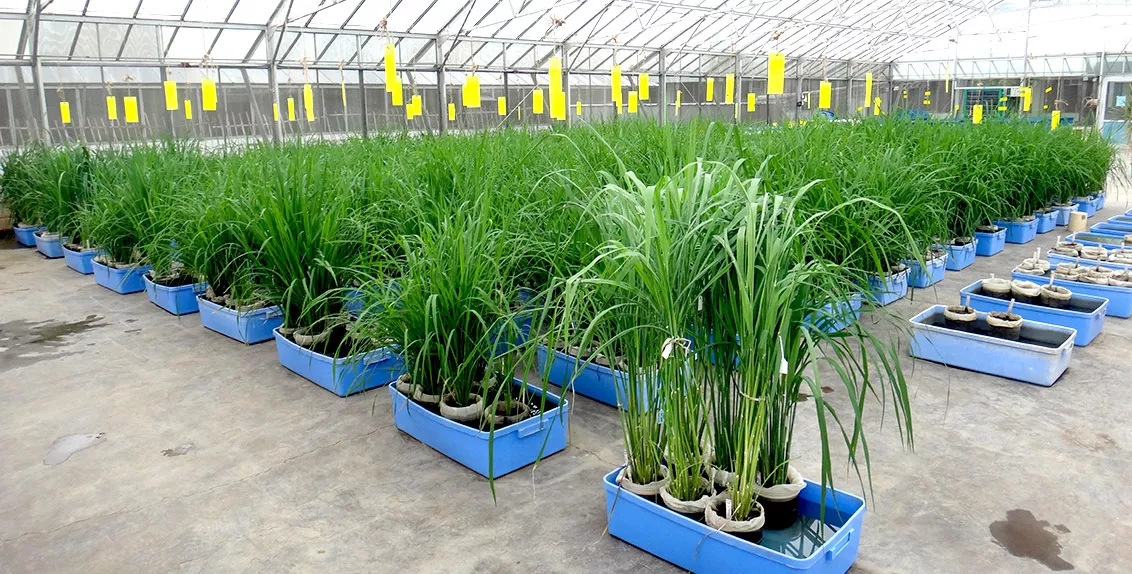New study fills knowledge gap on reproductive stage salinity tolerance in rice
A recent study by an international team of scientists, including Dr. R. K. Singh, Program Leader on Crop Diversification and Genetics at the International Center for Biosaline Agriculture (ICBA), presents an in-depth analysis of the research to date on salt-tolerant rice varieties and offers new insights into phenotyping for salinity tolerance in rice at the reproductive stage.
Published in Theoretical and Applied Genetics (a journal with an impact factor of 5.699), the study - jointly conducted by the scientists from ICBA, the International Rice Research Institute (IRRI), the Indian Institute of Rice Research (IIRR), and the University of Sussex - focuses specifically on salinity tolerance in rice at the reproductive stage as there is little previous research on this aspect.
Salinity tolerance in rice varies over its life cycle. Therefore, understanding the mechanisms involved at different growth stages is critical for breeding genotypes that are salt-tolerant throughout the growth period and produce high yields.
Although rice is categorized as a salt-sensitive crop, it is not equally affected at different growth stages. It is most sensitive at the seedling and reproductive stages.
Listing different varieties of rice released due to their salinity tolerance and cultivated commercially in salt-affected areas, the study notes that more than 90 percent of all studies related to the effects of salinity on rice have focused on the seedling stage and only a few studies have been conducted on tolerance at the reproductive stage. According to the scientists, salinity tolerance in rice at the reproductive stage is more important as it determines the grain yield.
One of the main reasons for limited research on salinity tolerance in rice during the reproductive stage is that phenotyping requires a considerable amount of time and effort.
For this reason, this study summarizes different methodologies for phenotyping, or identifying a set of observable traits in the plant.
The study also recommends some novel phenotyping methods for reproductive stage screening, including one developed at IRRI under the leadership of Dr. R. K. Singh.
Moreover, the study highlights that poor correlation between tolerance at the seedling and reproductive stages in some rice genotypes suggests that a different set of genes controls tolerance at these two stages. Therefore, it is not advisable to breed a variety based only on seedling stage salinity tolerance in rice.
Commenting on the study, Dr. R. K. Singh said: “In this study, we reviewed all the quantitative trait loci (QTLs) reported so far for salinity tolerance in rice and identified several genomic regions governing salinity tolerance across the rice genome spanning 12 chromosomes. The detailed analysis identified 63 meta-QTL regions containing 5,970 genes within 567 initially identified QTLs for salinity tolerance. The study proposed 15 meta-QTL regions as QTL hotspots underpinning major traits governing salinity tolerance in rice.”
After drought, salinity is the second biggest constraint on the productivity of several major crops, including rice. The study mentions that frequent occurrences of a combination of drought, due to declining water resources, and salinity, often due to poor irrigation management, have created a situation where rice ecosystems are now highly vulnerable to climate change. In addition, seawater intrusion in coastal areas is turning arable lands into saline soils.
This is why it is essential for breeders to know more about the response of rice plants to abiotic stresses such as salinity and drought. It paves the way for developing future-proof varieties that ultimately contribute to food and income security of rice growers.
The study concludes that it is important to take note of the latest research illuminating how rice responds to salinity as it could aid efforts on conventional rice breeding and genetic improvement for salinity tolerance.
